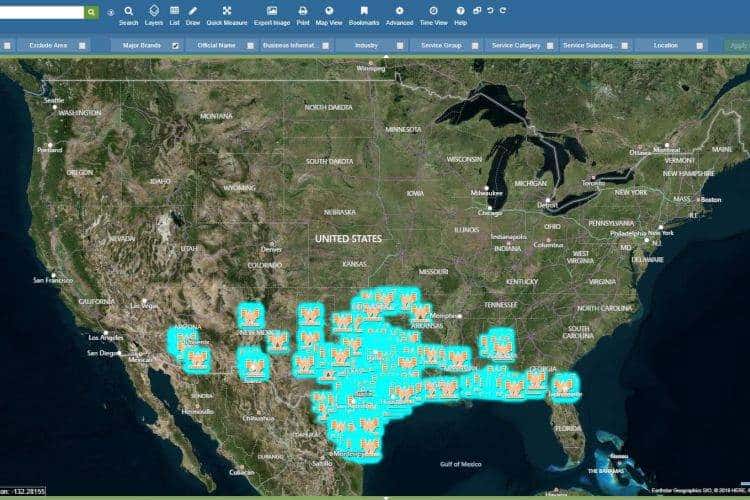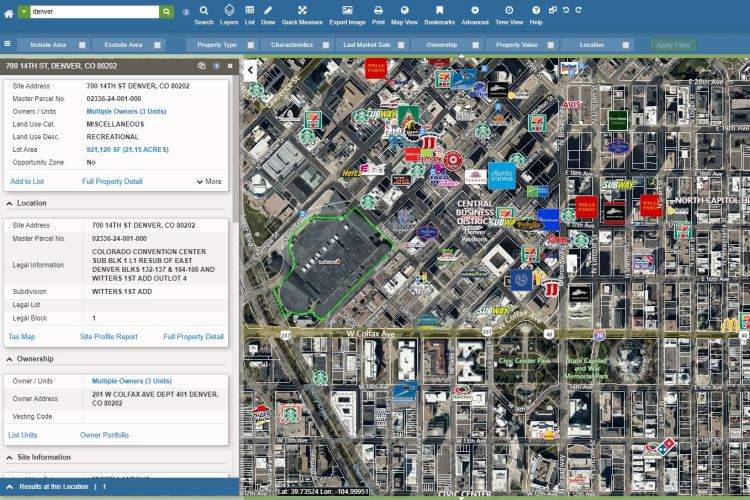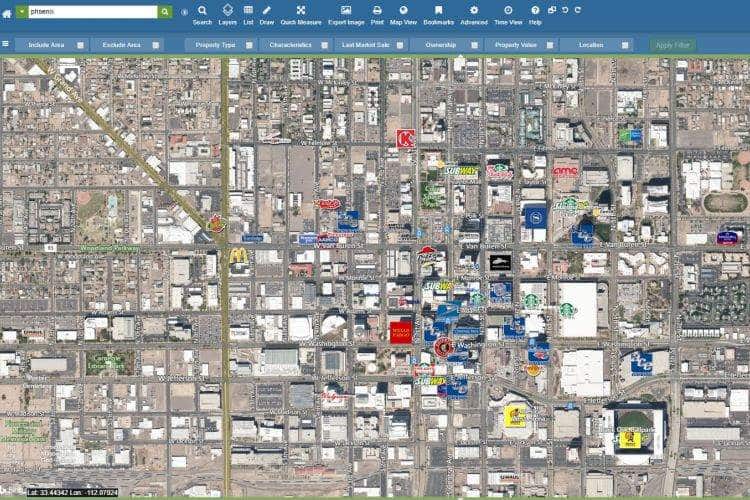Acquiring a property without understanding the lay of the land is like making a decision using half of a picture. Learn how points of interest help leading real estate professionals evaluate new opportunities.
What role does a nearby business play in the price appreciation of a residential property? How much impact do vital services like schools or hospitals have on the value of multifamily development in a district? Do neighboring businesses affect a retailer’s choice of a new store location?
In a New York Times best-selling book, real estate listing site Zillow details how between 1997 to 2013, residential property values near Dunkin’ Donuts locations appreciated by 80% in the United States, compared to the national average of 65% over the same timeframe. Similarly, when the National Association of Realtors (NAR) studied home buying and selling trends across the country, it found that a home located in a top school district would both fetch a higher price and have a higher resale value than similar properties near low-performing schools. Starbucks, meanwhile, has a dedicated team analyzing geographic information systems (GIS) and other map data, such as the number of businesses in an area, to determine the locations of its future outlets.

Clearly, there is quite a lot that a progressive professional in the commercial real estate space can learn using geographic milestones like points of interest (POI). Today, we will outline a few key ways that forward-thinking brokers and land developers can use POI data to research properties and markets more confidently.
7 Ways to Use Points of Interest:
Site Selection
While looking for profitable investments, builders and developers take multiple factors into account. But whether a property is being targeted for retail occupancy, adaptive reuse, or industrial redevelopment, working knowledge of the surrounding area is crucial information that allows developers to make informed property decisions. Points of interest are invaluable for developers seeking to gain market insights.
Competitive Analysis

Before setting foot in a new market, retail tenants must know where their competitors are as well as where the obvious gaps in the market exist. For example, a furniture store may not want to set up shop across the street from an Ikea outlet, whereas an athletic apparel store may be interested in a site directly across from a gym. Visualizing points of interest during site analysis allows brokers to use an intuitive, map-based interface to make these determinations.
Understanding Shopper Demographics
The concentration of specific points of interest in a geographic area speaks volumes about the type of shoppers a business can expect to find there. For example, multiple pubs and bars in an area is a reliable indicator that millennials frequent the neighborhood. While property in this area may do ‘just okay’ with mixed-use development, it could provide above-average returns for a 24-hour restaurant or even another bar. Having access to robust POI data will allow a discerning broker to understand the difference and make decisions accordingly.
Analyzing Trade Areas

For commercial real estate professionals, it is crucial to know what businesses are located near a target property to anticipate the expected performance of a new business in the area. The best point-of-interest data on the market today not only pinpoints nearby stores and organizations, but it also provides invaluable trade area analysis data points, such as sales volume or credit rating of a business, that can help inform performance predictions.
Identifying Flexible Workspace Locations
With co-working becoming a major commercial real estate trend, points of interest can prove to be a major decision point while appraising potential flexible workspace locations. Leaders in this space such as WeWork, for example, value a location’s proximity to bars, coffee shops, gyms, and other amenities in an effort to attract the startup crowd.
Lifestyle Mapping

The site selection criteria for retail centers or multifamily developments are greatly influenced by the points of interest surrounding a potential development. All else being equal when comparing properties, the retail, dining, and entertainment mix around a property is frequently a significant differentiator for developers.
Discerning Hyperlocal Trends
Traditionally, POI data has centered around entire zip codes, providing a macro picture of the neighborhood in its totality. However, today’s market leaders in location data provide POI data down to the building level. With special localized information streams like suite numbers for multi-tenant developments, developers can plan for retail spaces that will provide distinctive customer experiences or provide opportunities for membership-based networking within an office complex.
Combining Points of Interest With Other Map-Ready Content
For savvy brokers and developers, POI data is just the starting point that helps to determine market scalability. When combined with other comprehensive map-ready content, such as demographics, zoning restrictions, natural hazard risk, and census boundaries, points of interest can give businesses a sneak peek into the future and allows them to reshape the real estate environment.
Our regularly-updated POI data for the United States covers more than 16.4 million restaurants, retailers, gas stations, pharmacies, ‘mom and pop’ shops, parks, attractions, etc., and empowers users to analyze 200 distinct characteristics related to these points of interest. Points of interest can be searched by major brand names, business location attributes, service or sub-service categories (e.g. dietician), and industry information, such as Standard Industrial Classification (SIC) and North American Industry Classification System (NAICS).
Contact us today to learn how you can begin leveraging points of interest in your everyday workflows!